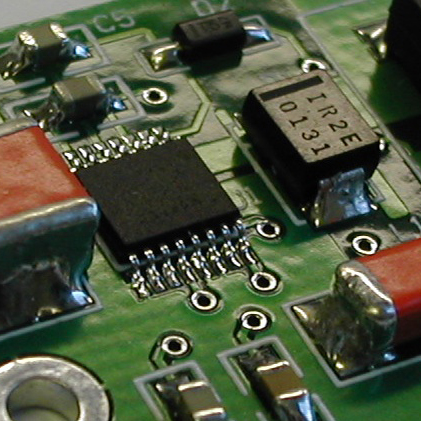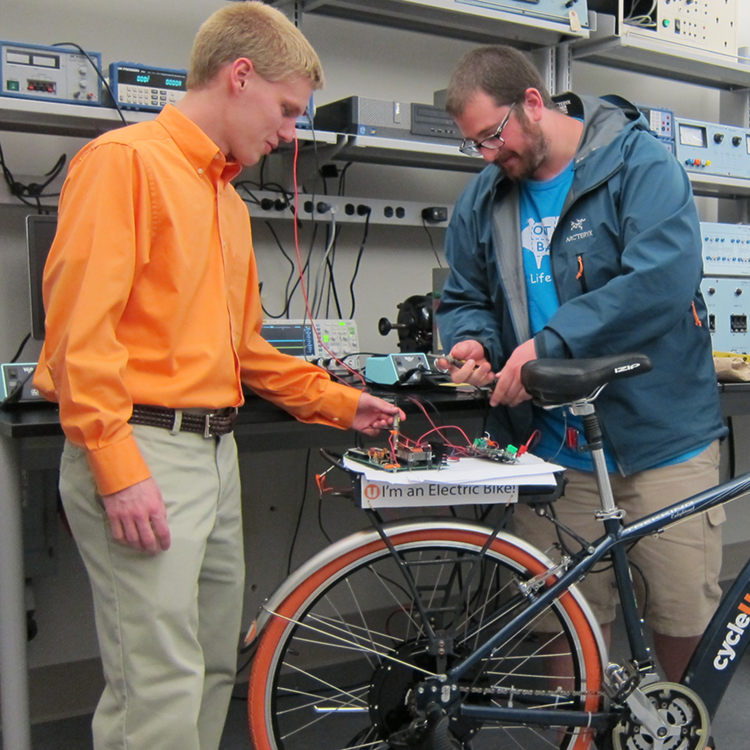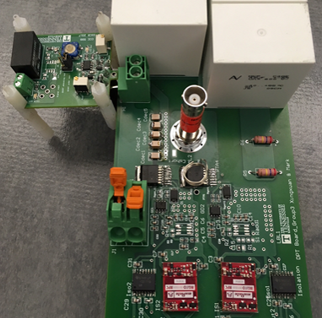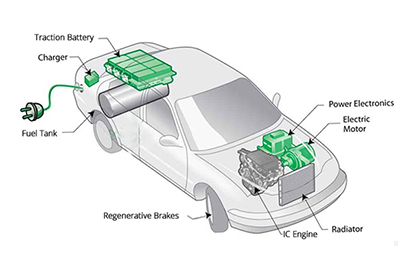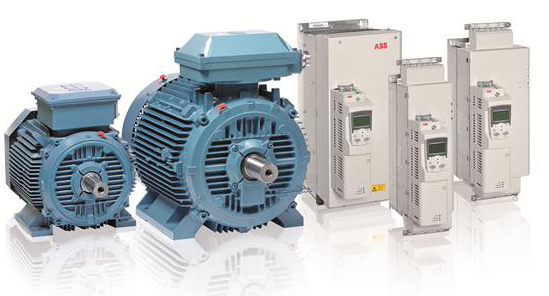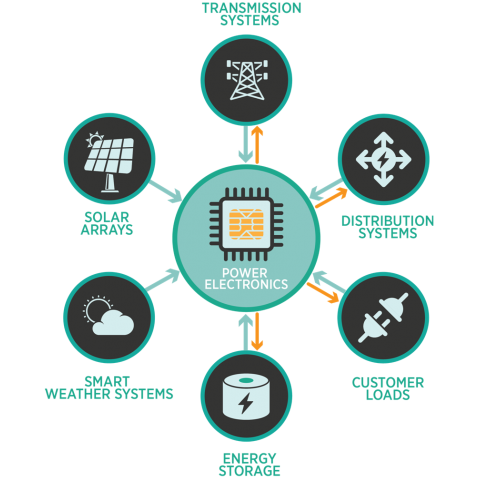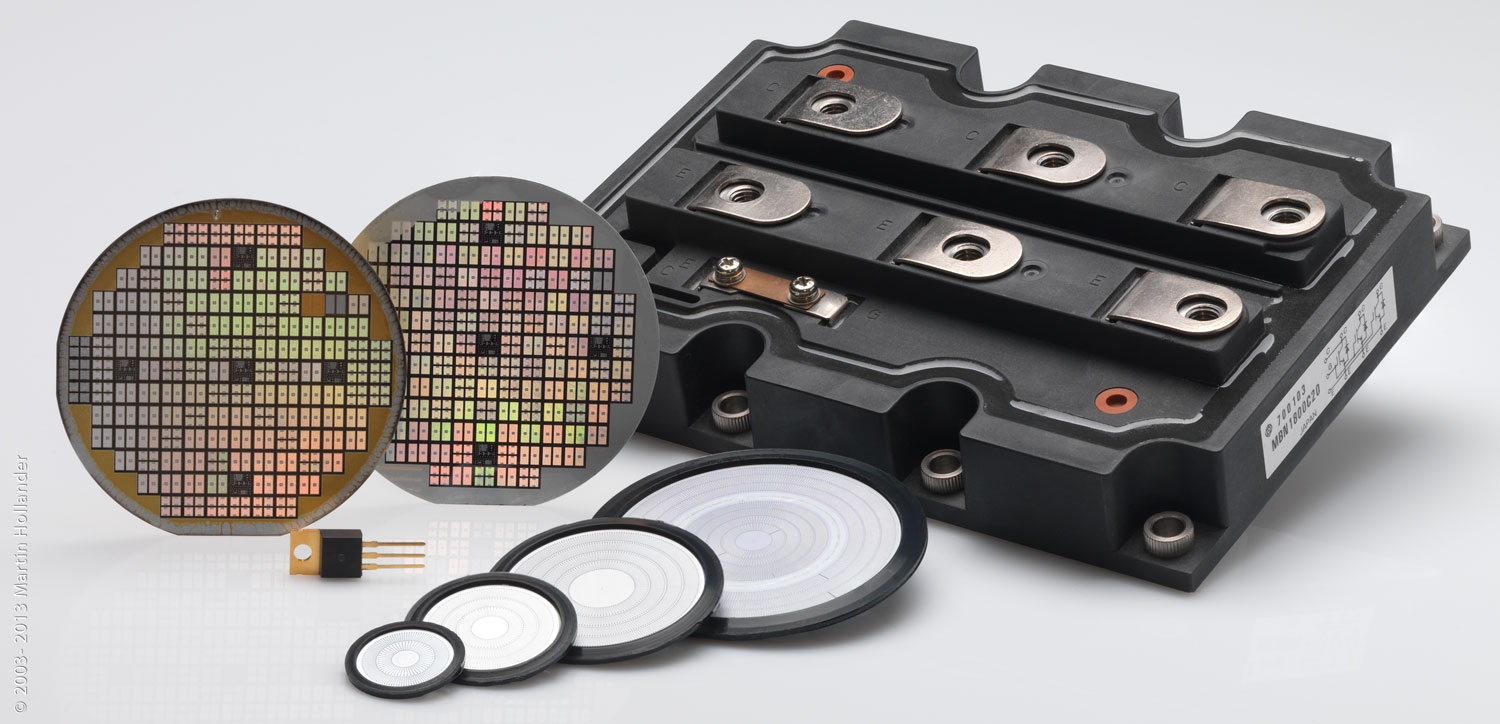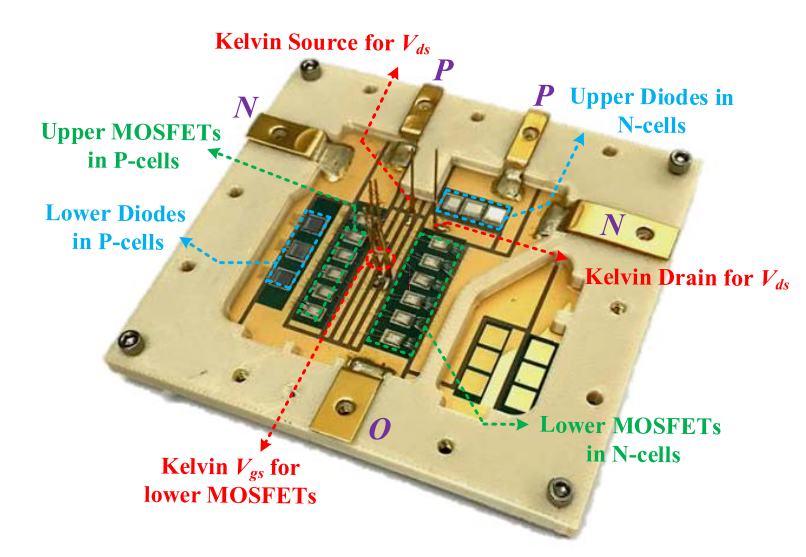Power Electronics Courses at UTK
Introduction to switched-mode power converters. It provides a basic knowledge of circuitry for the control and conversion of electrical power with high efficiency. These converters can change and regulate the voltage, current, or power; dc-dc converters, ac-dc rectifiers, dc-ac inverters, and ac-ac cycloconverters are in common use. Applications include electronic power supplies, aerospace and vehicular power systems, and renewable energy systems.
Design-oriented introduction to the analysis, design, modeling, and testing of power electronics systems in the context of a real electric vehicle system. Through practical laboratory experiments, students are guided through the fabrication of the multiple switched-mode power converters as well as associated analog and digital control systems necessary to realize a functioning, sub-kW electric vehicle. Specific systems include a bidirectional DC-DC converter and motor drive inverter which are designed using standard power electronics analysis techniques. The course culminates with a design exposition/competition of the constructed vehicles.
Motivations and inherent design issues associated with high frequency switched mode power supply design. Origins and dependencies of frequency dependent losses will be reviewed, with specific emphasis on potential design approaches which reduce energy loss and facilitate high frequency operation. Resonance, and its application to power converter will be discussed. Students will learn steady-state and dynamic modeling techniques which allow the analysis and design of converters containing significant resonant intervals, for which traditional small ripple assumptions do not hold.
Principles, pulse-width modulation techniques, and control for three-phase power converters. Average models of three-phase converters in stationary and rotating reference frames. Small-signal models in rotating reference frame and control design. Three-phase inverter applications as motor drives. Drive system modeling and control.
Energy outlook, interconnection issues of distributed energy resources, efficiency of power production, electric energy conversion and storage. Photovoltaics, fuel cells, wind turbines, microturbines.
Lab-based course introducing techniques and best practices for the characterization, driving, and protection of WBG devices. Students perform experimental static and dynamic testing of WBG devices, and develop models of experimental performance. Characterization results enable advanced modeling, design, and optimization of power converters leveraging wide bandgap devices.
This course will give students an introduction to electric vehicles. Students will be exposed to a broad range of topics including battery basics, battery management systems, battery chargers, electric vehicle machine and drive, electric vehicle infrastructures and electric vehicle modeling.
Design of three-phase power converters. Control design, semiconductor device selection, passive components design and selection, loss calculation, thermal design, protection, and auxiliary circuits. Interface issues with source and load. Harmonic and EMI filters. Drive system design.
Electric power quality, harmonics, voltage sag, reactive power compensation, transient stability. Structure and control of power converters, multilevel converters, active power filters, static series and shunt compensators, FACTS, HVDC.
Semiconductor physics and circuit models. Power diodes, power MOSFETs, thyristors, GTO thyristors, IGBTs, emerging devices and circuits. Wide band gap power semiconductors. Solar cell device physics.
Course covers advanced topics in modeling and control of power electronics, including discrete time modeling, digital control, and nonlinear phenomena
Introduction to power electronics packaging. Students will be exposed to a broad range of topics including packaging materials and procedures for Si, SiC and GaN devices
This course gives a review of fundamental magnetics theory, magnetic materials, and magnetics modeling. High-frequency effects in both magnetic cores and in windings will be discussed, as well as FEA simulation techniques and the best practices for magnetics optimization. Electro-magnetic interference introduced by high-frequency switching devices and their mitigation methods assisted by magnetics design will also be covered.
